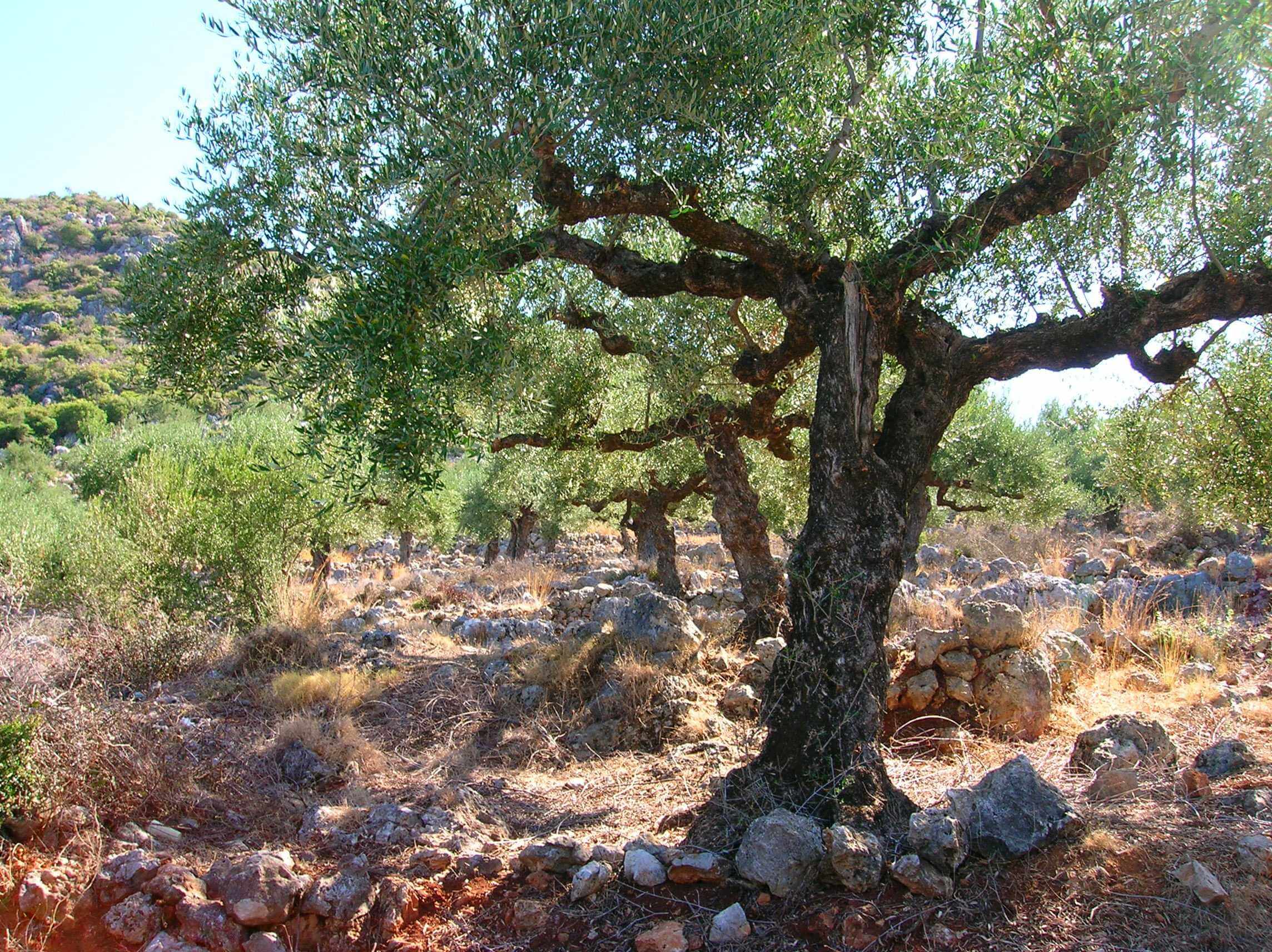
Historical review
The history of the olive tree begins before the invention of writing. Historians consider the most likely place of origin of the olive tree to be the regions of Syria and Anatolia, whose mountain slopes are overgrown with wild olives. This element, however, cannot be proof, because today we meet wild olive trees throughout the Mediterranean, in Greece, on the northern coast of Africa, in Spain, but also Turkey. In particular, wild olive trees are found in Greece from the slopes of Mount Olympus to Psiloritis in Crete and from the Ionian Islands to the islands of the Aegean.
The historian Theophrastus mentions that the olive tree grew in Greece, in South Italy, Syria, and Arabia (towards the sea), in Egypt and elsewhere.
The olive tree is one of the oldest cultivated trees on our planet as its cultivation dates back 6000 or more years ago. Sources from Egyptian literature testifies that it was also cultivated in Egypt past the olive tree. But around 2000 BC, the olive groves disappeared, perhaps due to destruction from an unknown cause or there is also the possibility that the population at that time to turn to another crop. Then, it is believed that there was population movement towards the southern coasts of Crete, who probably carried the olive tree with them.
Other historical sources state that the olive tree was introduced by the Phoenicians in Greece, Syria, and Carthage during the pre-Homeric era. Of all the ancient races only the Assyrians, Babylonians, Semites, and Armenians knew well the olive tree. The Greeks and later the Romans and the Jews, gave in the "holy tree" its prominent position. For the Ancient Greeks, the olive tree was a sacred tree. It was directly connected to their daily life, as it constituted part of their diet, religion, and decoration of objects. The olive was a symbol of peace, wisdom, and victory. In ancient times, the winners of the Olympic games were crowned with an olive branch. Thus, the olive constitutes to this day a symbol of the Olympic idea.
Finally regardless of the origin and the method of propagation of the olive tree, what must be noted is the fact that its cultivation spread throughout the area of the European continent, where the current name is "European Olive" (Olea europaea). In particular, the climatic conditions of the Mediterranean basin were very favorable for the cultivation of the olive tree, and quickly spread to all Mediterranean countries of which it is today the main feature. Main representatives of olive tree cultivation in the Mediterranean basin are (in order the countries with the largest number of trees): Spain, and Italy, followed by Greece, Portugal, Tunisia, Algeria, and Morocco.
However, during the previous century the cultivation of the olive tree also extended to areas of the American continent that have similar ones climatic conditions to those of the Mediterranean, such as California in N. America, Argentina, Chile, Uruguay, and Peru of South America. Attempts to cultivate olive trees have also been made in Australia.